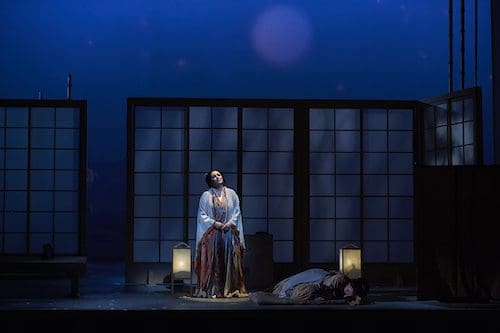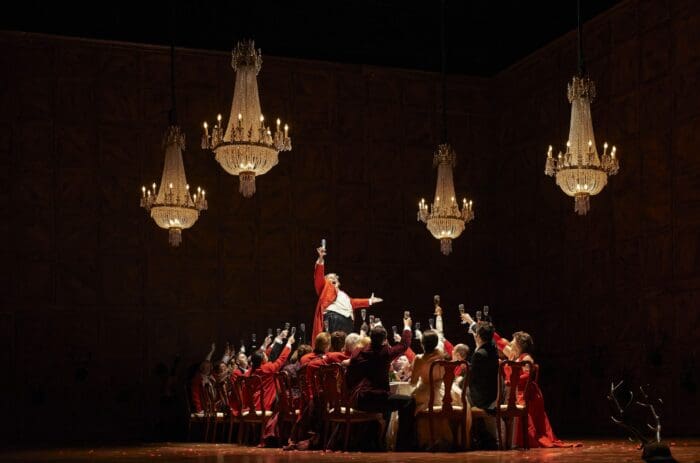Two strong but ultimately uninspiring productions are currently playing at the Four Seasons Centre as the kick off to the Canadian Opera Company’s 2014/15 season. Though they’re of comparable overall quality, Falstaff and Madama Butterfly have little in common. The former is visually grand with lots of awkwardly long breaks to change the elaborate sets (which range from comically kitschy to beautifully fantastical) while the latter is minimalist (the set so bare-bones it verges on dull) and straightforward, the performance only pausing when it’s time for intermission.
Falstaff borrows its plot from one of Shakespeare’s stupidest plays- The Merry Wives of Windsor, a farce designed to appease patrons who had fallen hard for the charms of Fat Jack in Henry IV. It’s an absurd and strangely elaborate story about cuckoldry, hubris and jealousy that amounts to what is essentially just a series of escalating pranks. Lyne Fortin mixes strong vocals with a charmingly mischievous performance as Alice Ford and Gerald Finley is a show-owning lead with plenty of comedic chops but, despite the lack of ease in the transitions, the real stars here are Paul Steinberg’s sets, Brigitte Reiffenstuel’s costumes (both the beautiful and the absurd) and the audacious budget that allows even a lackluster opera to be something of a thrilling spectacle. There are moments of Falstaff that are so surreal they made me laugh for the wrong reasons, but everyone’s work here (except perhaps Shakespeare’s) is on point.

In contrast, the almost cripplingly famous Madama Butterfly is surprisingly straightforward. Its “American military jerk marries naive Japanese girl then abandons her” plot barely needs a two-sentence explanation, which is somewhat refreshing after the “and then, and then, and then” structure of Falstaff. The opera’s enduring success could be explained by the promising juxtaposition of the plot’s simplicity with the intensity of its emotional consequences, if the story weren’t too plagued with outdated patriarchy and cultural landmines to really delve into the characters and their emotional consequences. Both leading voices are beautiful but Stefano Secco isn’t entrancing enough and Patricia Racette isn’t sweet enough to make the characters much more than frustrating. I appreciate the simplicity of Susan Benson’s design (it’s nice to see The COC pull back occasionally) but there isn’t enough magic on stage to fill the empty space (although lighting designer Michael Whitfield certainly provides his fair share). The magic is all in the pit where conductor Patrick Lange and the orchestra do stunning justice to Puccini’s extraordinary score. Madama Butterfly has a more nuanced story than your average opera (even if it’s difficult to mine) but its power comes from the composer whose complex and soaring orchestrations are deserving of their legend. The extended instrumental sequence as the sun sets and rises on Butterfly waiting for Pinkerton to return is still playing in my dreams. Director Brian Macdonald’s production isn’t bad (though it could be much better) but I’d have been happy just taking in Madama Butterfly like one would a symphony- relax, don’t worry about the staging or the story, just listen to those cellos.

